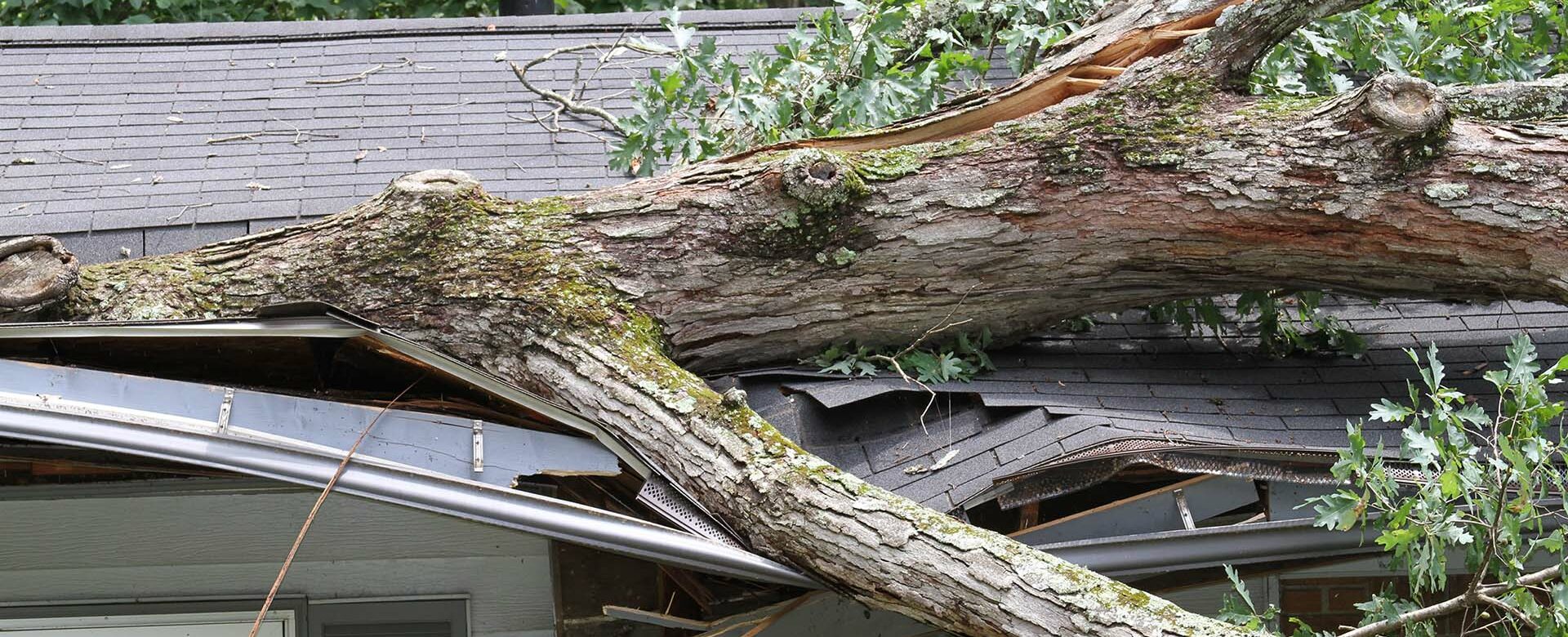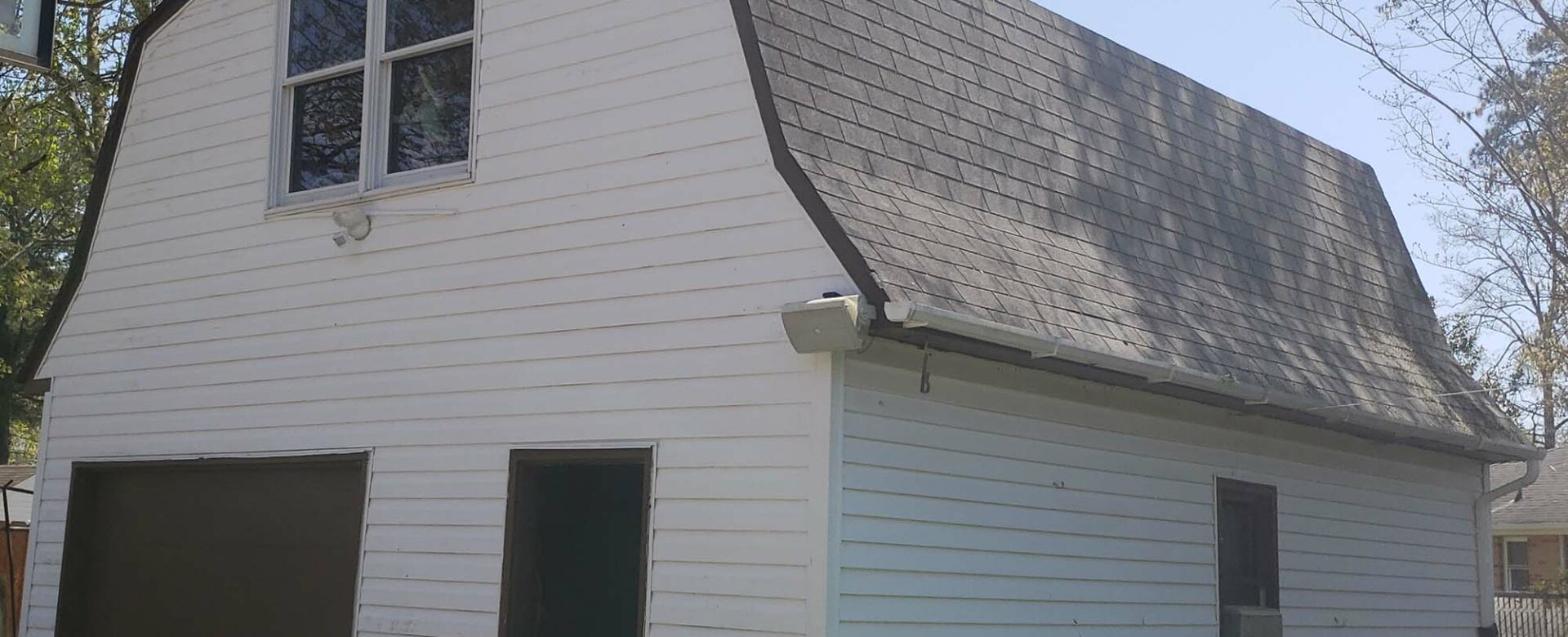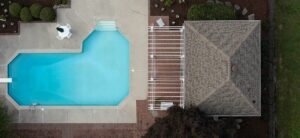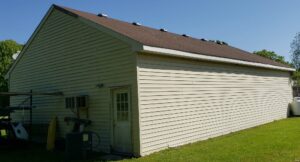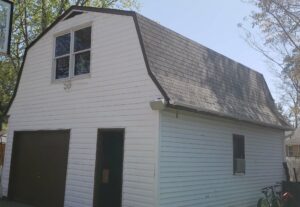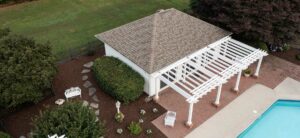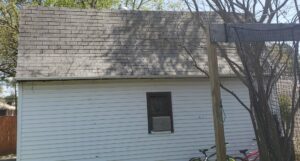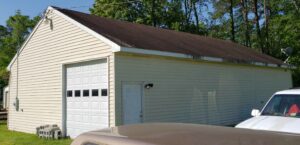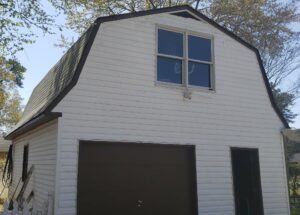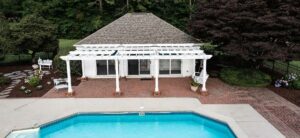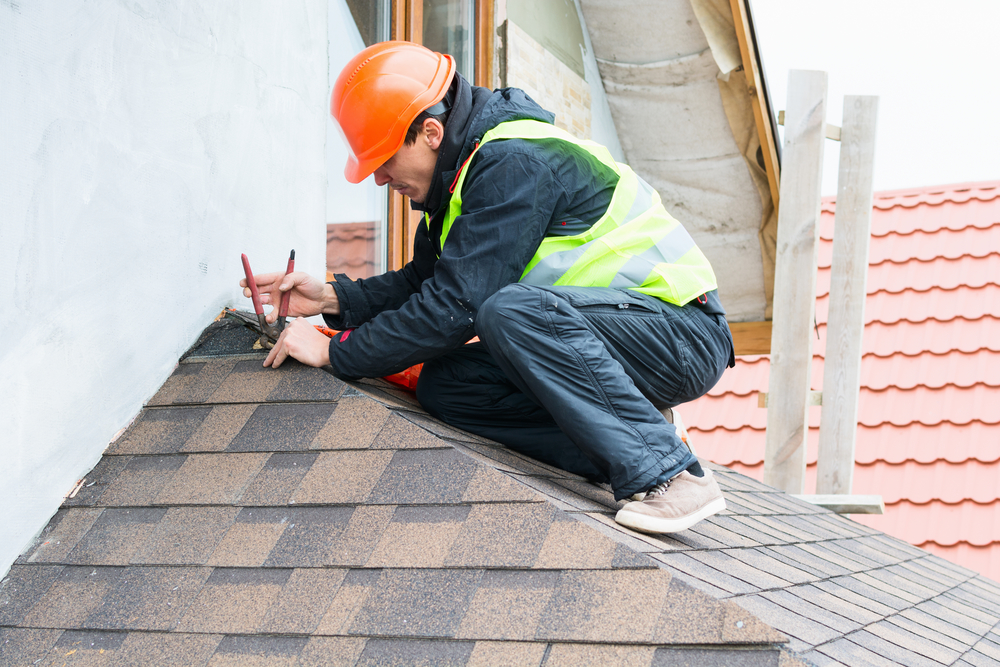That beautiful tree in your backyard that provides shade in the summer, fragrant blooms in the spring, vivid colors in the fall, and maybe even holds a swing or treehouse for your kids could also be damaging your home without you knowing it.
When trees are not properly managed and maintained, they pose a significant risk to your home’s roof health. And that risk isn’t just sudden, storm-related damage. Even without a storm or major weather event, trees can take a toll on your roof over time in subtle ways. But there are ways to mitigate this damage, particularly for homes battling the specific environment and severe weather of southeast Virginia.
How Trees Affect Roofs
- Falling Debris
Falling leaves, branches, pine needles and twigs are common culprits when it comes to roof damage caused by trees in Hampton Roads. A few leaves or needles here and there may seem harmless, but over time they can accumulate on your roof, leading to clogged gutters, water pooling, and damage to shingles and flashing. - Moss and Algae Growth
Trees can create shaded and damp areas on your roof, providing an ideal environment for moss and algae growth. This is especially true in the humid and often damp climate in the Tidewater Region. Over time, moss and algae can compromise the structural integrity of your roofing materials. - Wildlife
Trees are often home to a variety of wildlife including squirrels, birds and even racoons or possums. If the trees they inhabit are close enough to your house, these critters can find their way onto your roof and potentially create entry points or damage the roofing materials while searching for shelter or food. For instance, it’s not uncommon in Hampton Roads for small birds to build nests in open gutters during the spring season, creating serious clogs when summer storms hit. Roof rats and other pests are also common during the cold or wet months. - Falling Limbs or a Tree
Of course, the most obvious source of tree-related damage to a roof is by limbs falling off during storms or strong winds. In our hurricane, tropical storm and nor’easter-prone region, this is especially common. During any one of these types of weather events (or even just a summer pop up thunderstorm) overhanging tree limbs can break and fall onto your roof, causing serious damage by knocking off gutters or flashing, puncturing shingles or even the roof decking below, which can lead to more extensive structural damage. There is the rare occasion when an entire tree comes down and, hopefully hits nothing, or it does hit something.
What You Can Do to Prevent Tree-Related Roof Damage
- Identify Tree Rot
The most likely offender in the forest is a tree with any kind of rot. Tree rot can happen for a variety of reasons: damage from storms, animals or disease, but trees that are dead or dying also invite in termites, which are certain to finish the job, causing a tree to lose any structural integrity it had left. By inspecting the trees on and around your property regularly, you can identify rot early and either call in a professional arborist who can assist in removing the affected portions of the tree while saving the rest or a tree removal company if the damage is too far along. - Remove or Trim Encroaching Trees
Even if trees are healthy, they can still create an unsafe situation if they begin to encroach on your home’s immediate perimeter. Pruning and trimming trees near your home is essential, because even if a limb or debris doesn’t come flying off, consistent contact between a tree and your roof can cause its own kind of damage. This is often seen in loose gutters and loose or missing shingles. Again, consult with a professional arborist and/or tree trimming company to remedy this. - Keep Gutters Clear
Regularly clean your gutters and downspouts to prevent debris accumulation and water damage. Clogged gutterscan lead to water overflow, which can damage your roof, siding, and foundation. - Install Gutter Guards
Consider installing high capacity gutters and gutter guards to prevent leaves and debris from entering your gutters. High quality gutters and leaf guards can be a valuable investment in maintaining your roof’s health. - Don’t Forget the Flashing
Properly installed flashing around roof penetrations, such as chimneys or vents, can help protect your roof from water intrusion due to tree-related damage. A roof specialist can inspect your roof to ensure flashing is properly installed and that existing flashing is not damaged, loose or missing.
While the variety of trees in coastal Virginia can enhance the beauty and value of your property, it’s essential to be mindful of their potential to damage your home’s roof. Regular maintenance, including tree trimming, gutter cleaning, and roof inspections, is key to preventing costly roof repairs. By taking proactive steps to protect your roof, you can continue to enjoy the benefits of having trees on your property without worrying about the potential damage they may cause. Your home and roof will thank you for it in the long run.
We Can Help
If you’ve experienced damage to your roof from trees or other causes, Andrews Roofing can help. We’ve been providing reputable, high-quality roofing services in the Hampton Roads region for decades, and we’re familiar with the specific issues that arise in this area. We can help you not just repair your roof, but also identify and fix potential problems so your roof and home remain healthy long after our work is done. Contact us today.
